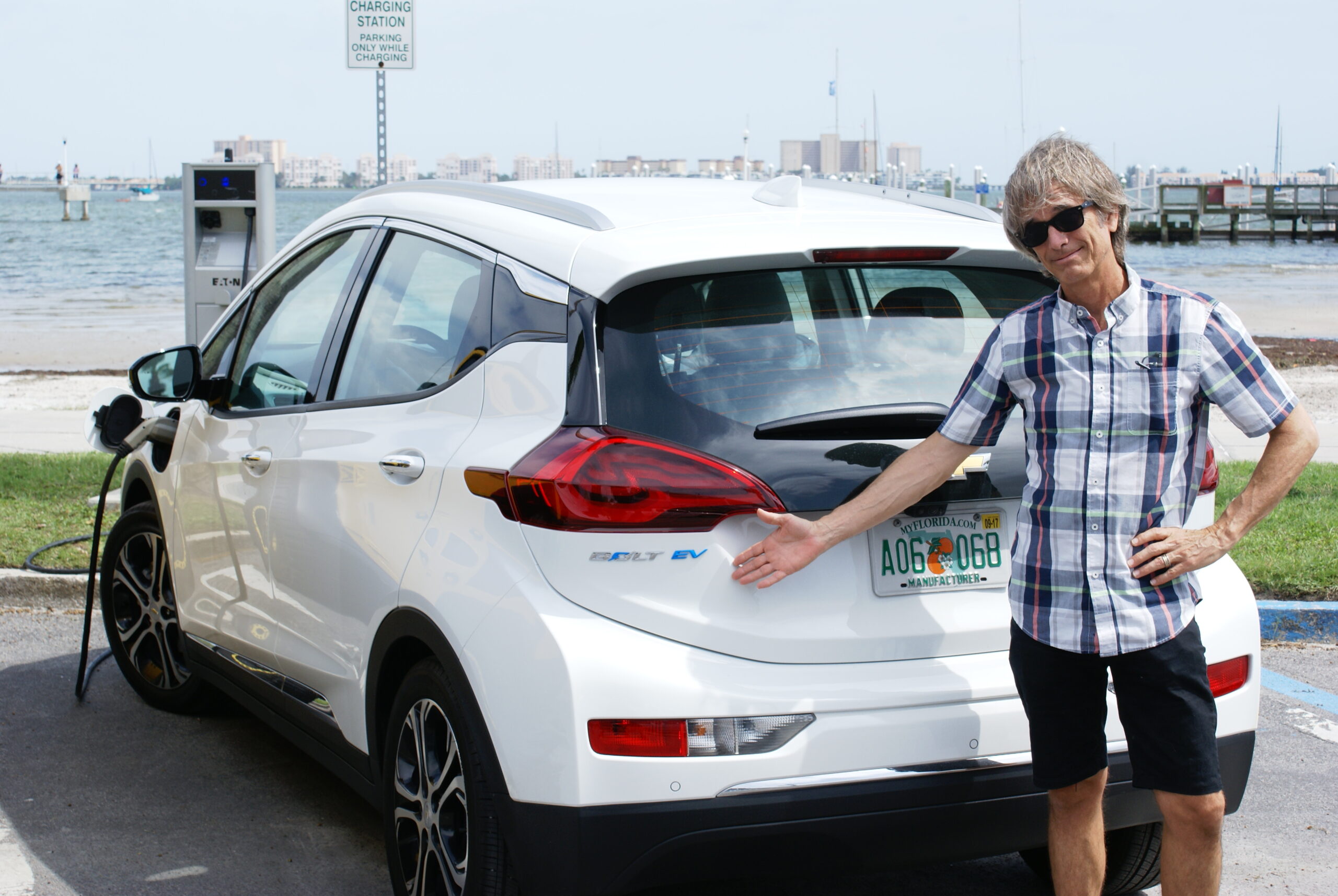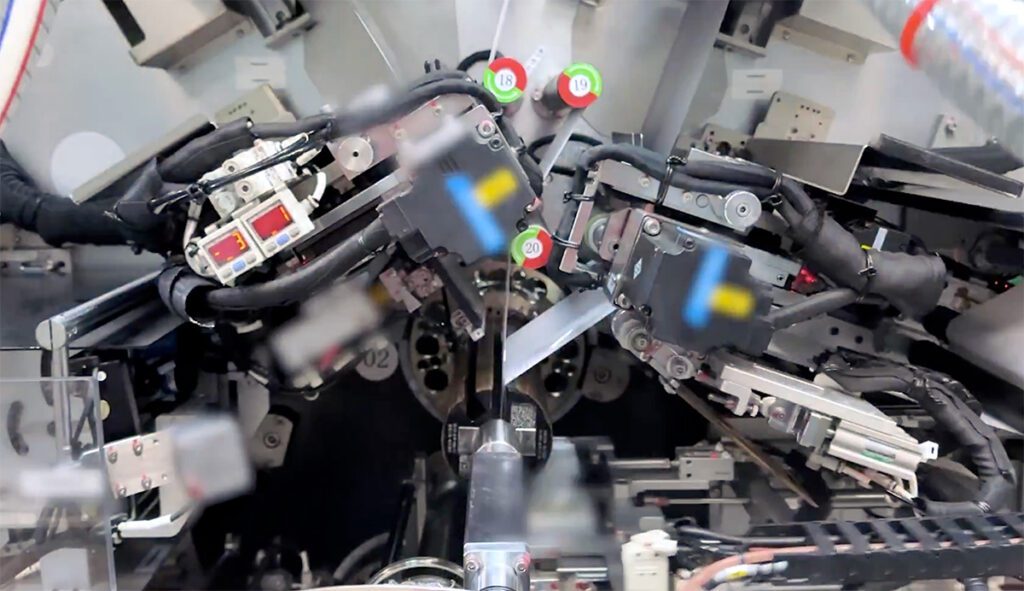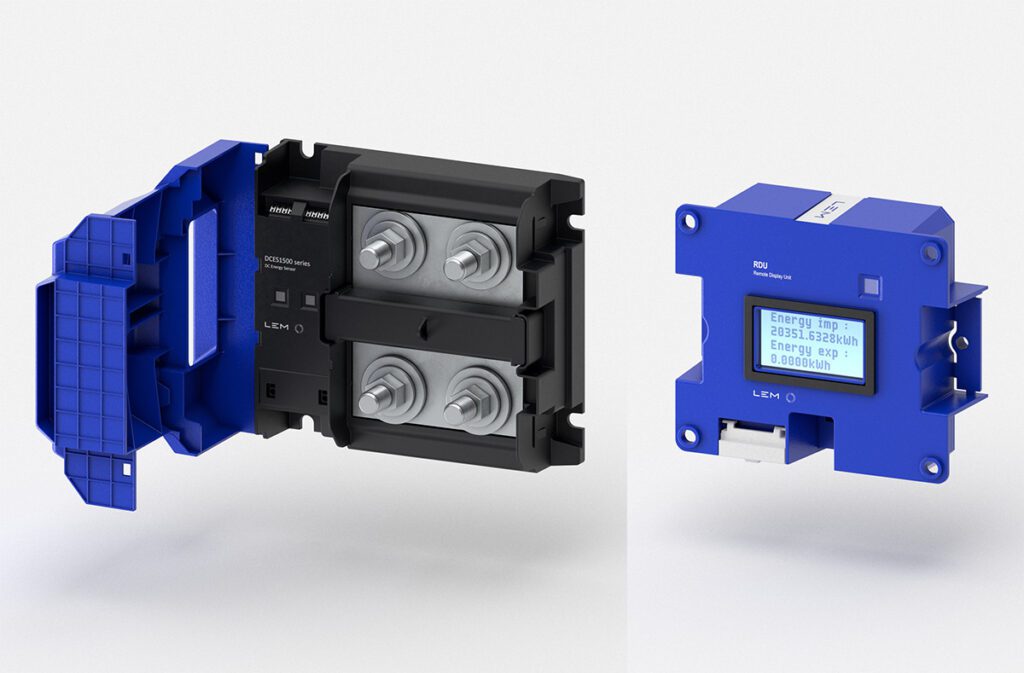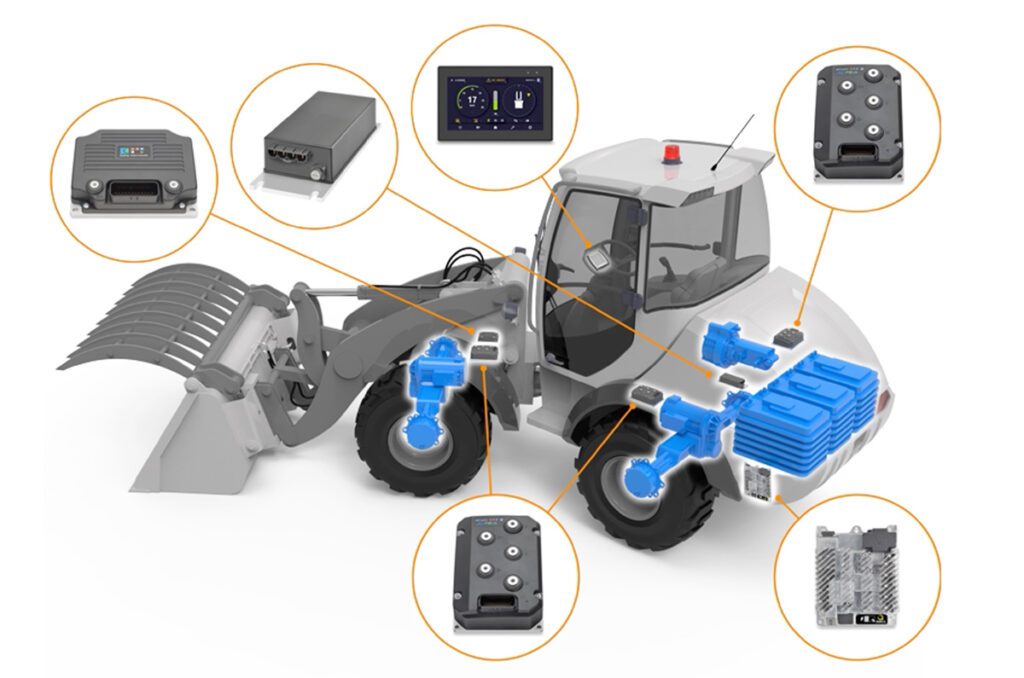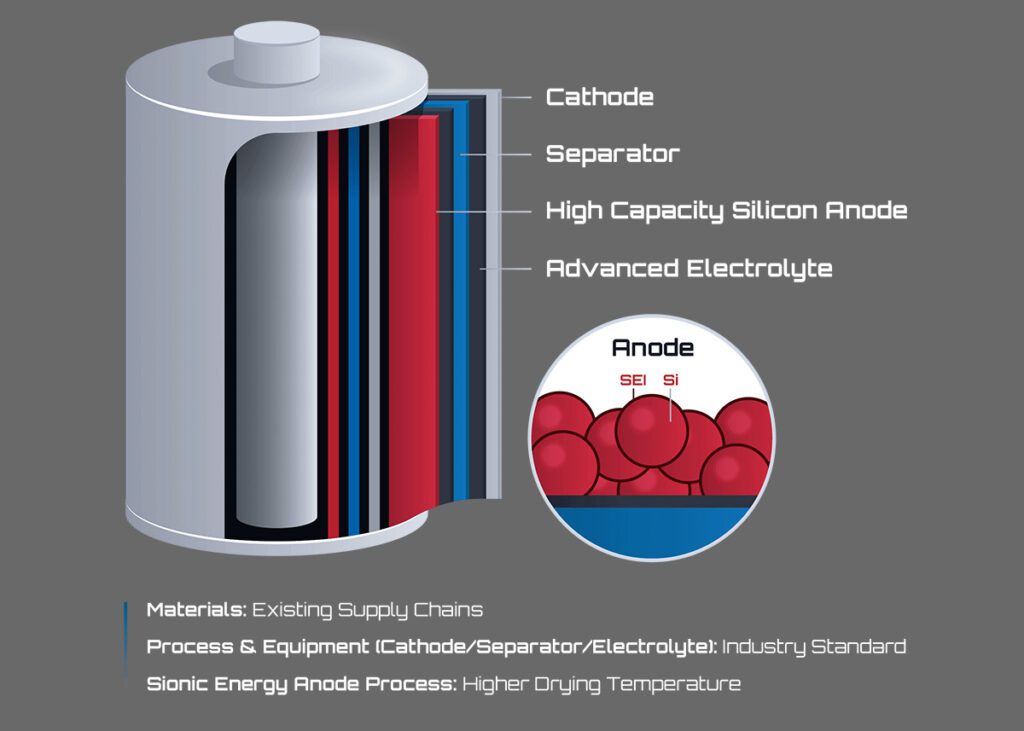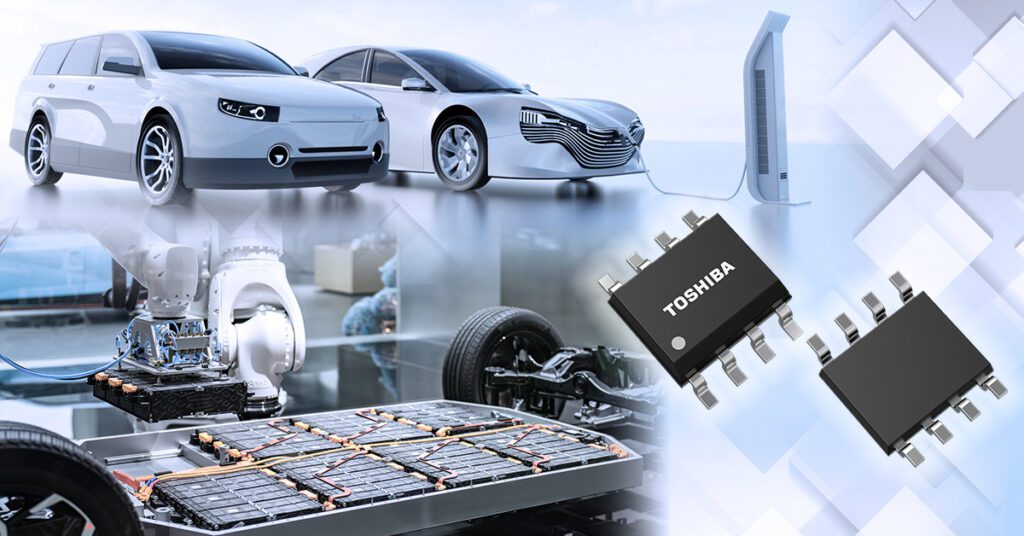Here at Charged, we usually write about technical matters and industry trends, and leave the car reviews to others. However, after spending a week with the Chevy Bolt EV, I am moved to write not just a review, but a rave. I’ve driven pretty much every EV that’s widely available in the US, and there’s no question in my mind that the Bolt is the best of the bunch so far, with the possible exception of Tesla’s Model S.
What’s that, you indignantly huff – the possible exception? The author of a whole book, and hundreds of articles, about Tesla, who so often ridicules the Big Three and their lackluster electrical efforts, deigns to admit that this practical little Chevy could rival the coolest car ever built? Well, let’s look at what the Bolt has to offer.
The Bolt’s official EPA-rated range is 238 miles, but I consistently got more (one driver claims to have achieved well over 300 miles). With an official efficiency rating of 28 kWh/100 mi, the Bolt edges out the LEAF (30 kWh/100 mi) and soundly beats the much larger and faster Model S (34 kWh/100 mi). I’m not one of those guys who measures actual miles travelled and plugs the figures into a spreadsheet, but I was amazed by how much mileage I squeezed out of the Bolt – I’d drive 10 miles, and the range meter would tell me I’d only used up 5 miles of range. Hypermiling? Far from it – I cranked the AC and punched the pedal at stoplights to see how fast she’d go.
And go she will. Every EV I’ve driven leaps when you step on it, and the Bolt is no slouch in that regard. I found it a little more fun to drive than my LEAF, with loads of power and smooth, solid handling. Its 0-60 time of 6.3 seconds is only a little slower than a plain Model S (5.0 seconds), according to Motor Trend (which published an in-depth comparison of the two EVs).
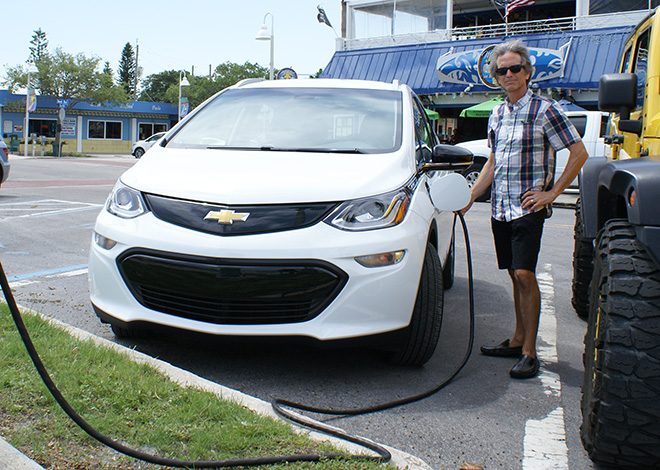
Most cars have at least a couple of little details that annoy, but I found none with the Bolt. It has all the latest high-tech goodies, and they all work simply and intuitively. There’s a Low mode that features enhanced regen and allows for one-pedal driving. You can switch between regular Drive and Low modes with a touch of the shifter, and you can also easily pop it into Neutral if you’re one of those guys that likes to coast. You can start the car remotely, allowing you to pre-heat or -cool the cabin, using the key fob. Most EVs have this feature, but you have to use a smartphone app.
Cargo space is a big deal for me, as I’m a working musician, and it’s a glaring weak spot for most EVs. I’ve found no plug-in vehicle that matches the convenience of my good old Prius when it comes to hauling gear, but the Bolt does better than most. The cargo area (with seats down) in the Bolt is roughly equivalent to that of the LEAF. It’s one foot shorter than that of the Prius, about the same width, and a tad higher. However, it isn’t all about cubic feet, but rather about the layout. The Prius has a low cargo deck, and the seats fold perfectly flat, an optimal layout that no other plug-in can match (not the Prius Prime and, no, not even Model S, which has a small but irksome lip across the rear).
Most EVs, including the Bolt, have an odd-shaped cargo compartment. The seats do not fold flat, so when you fold them down, there’s what you might call a well behind them, which makes it awkward to load large objects. The Bolt does have a removable board that covers this well, forming a flat plane with the seat backs, but it’s made of a light, flimsy material that would never stand up to regular use. All that said, with a little creative packing, I could get everything I need to play a gig into the Bolt.
Note that all the above quibbles apply only to those of us who need to load large, heavy objects on a regular basis. If your hauling needs consist of groceries and an occasional larger item, you’ll have no complaints with the Bolt.

So, time for some (unfair) comparisons. The Bolt blows my 2015 LEAF away. It has much more range, it’s more efficient, it’s a little faster and more fun to drive, and the controls are laid out better. Of course, the Bolt blows away every other EV in its class, because it belongs to a new generation. GM has basically stolen a few months on the other EV-makers. The new LEAF will be out in September, and may well match the Bolt on range and performance.
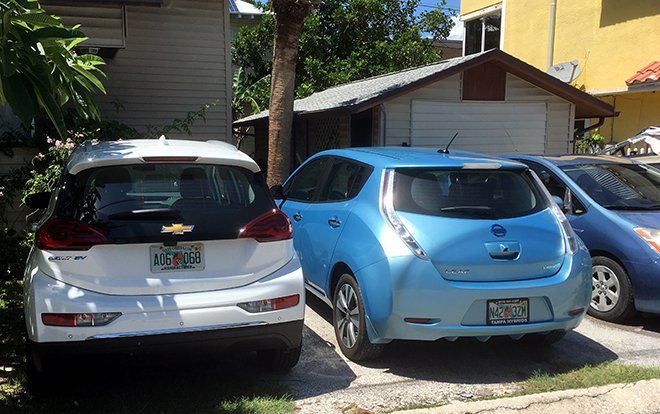
The only current EV that’s better is the Model S, which goes for at least double the price. The Bolt doesn’t presume to rival Model S, but depending on what you want from a car, you may find that it comes close. Yes, Model S is more stylish, more powerful and a lot bigger. The Bolt’s limited autonomy features can’t compete with Tesla’s Autopilot, but the Chevy offers similar range, and considerably better efficiency (according to fueleconomy.gov, you’ll save around 72 cents for every hundred miles). There’s nothing luxurious about the Bolt’s interior, but then a lot of people say the same about Model S.
Of course, when Model 3 hits the streets, all bets will be off. We’re expecting Tesla to deliver something amazing, and it will have to if it means to outclass the Bolt.
I’m convinced that anyone who spends a few days with the Bolt, as I did, will forget about buying a new gas burner. However, my excitement is tinged with sadness, fearing that, unless GM changes its strategy, most of the general public will never be aware of the Bolt at all. As I and other EV writers have noted so many times, GM and other automakers do almost no advertising or marketing for their plug-in models. (The official line from GM is that it markets them to “the kind of customers that buy EVs” – which means online ads in geeky mags for engineers, like this one, but no TV spots or ads in more mainstream media.)
[Editor’s Note: As Green Car Reports reports, GM recently ran full-page ads for the Bolt in the Washington Post and New York Times. Could this be the beginning of a more agressive marketing strategy? Let’s be optimistic.]







